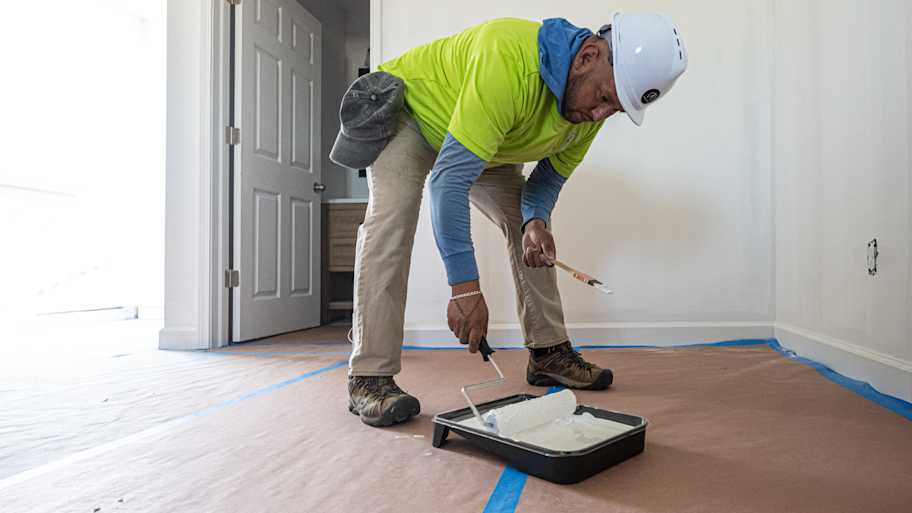How to Paint Your Tile Backsplash in 6 Easy Steps
Give your space a fresh, new look by painting your backsplash


Many things can be transformed with paint—from your bathroom cabinets to your bedroom walls. But you might not have considered that you can also update your kitchen by painting your tile backsplash.
“Many house flippers we work with know that giving a fresh surface to an existing backsplash is well worth the investment,” says Bob Tschudi, Angi Expert Review Board member and general contractor in Raleigh, NC. “Potential buyers want to feel like they can just move in and start living, and this kitchen modernization is a great way to do that.”
With a few tools and a fraction of the time, you can paint your way to a whole new look. But before you get started, follow these tips to make sure your project goes as smoothly as possible.
Can You Paint Tile Backsplash?
Yes, you can paint tile backsplash. It’s much easier than replacing old tile with new tile, not to mention much more cost-effective. You can transform the look of your kitchen backsplash in six quick steps and with a few tools.
Painting a kitchen tile backsplash is much more effective than painting floor or shower tiles because they don’t get the same level of wear and tear, forcing you to look for different floor and shower tile ideas.
No foot traffic or excessive water hits the tiles, but you must use paint that can handle steam and splashes from cooking. In addition, just like you should know how to clean floor tile grout, learn how to clean the backsplash regularly to maintain its appearance.
Benefits of Painting a Tile Backsplash Instead of Replacing
Learning how to paint tile backsplash may result in many great benefits, including the following:
Save money on tile installation cost: You don’t have to worry about purchasing new tiles or paying for labor to install them.
Less mess: You can repaint a tile backsplash quickly, resuming use of your kitchen after a few hours versus a few days with a tile installation project.
Transform outdated tiles: Your kitchen backsplash sets the tone for the kitchen and can be an eyesore if outdated, but painting the tiles can transform the look in a few hours.
It’s a DIY project: You don’t have to worry about hiring contractors or being home to give them access to your kitchen; anyone can paint a tile backsplash.
Prepping to Paint Your Tile Backsplash
Before you get overwhelmed with all of the beautiful colors to choose from, keep in mind you need to use epoxy paint to paint over your existing backsplash.
Epoxy paint is made to stick to tile and is long-lasting. And while it’s great for painting over tiled backsplashes in your bathroom, kitchen, or even around your fireplace, it won’t hold up in the shower, increasing your bathroom tile repair cost down the road.
Before you begin painting, be sure to assemble the other tools needed to paint your tile backsplash, including:
Degreaser and soft sponge for cleaning tile
Putty knife and acrylic caulk to repair any chips or cracks before painting
Wet paper towel or sponge to clean up any excess caulk after repairs
Hand-sanding machine or at least 100-grit sandpaper for sanding
Painter’s tape to protect any areas you aren’t painting, such as the countertop
Primer to ensure the paint adheres to the tiles well
Small foam rollers or paintbrushes
Preparation details are imperative to successfully paint your tile backsplash, especially understanding how to fix cracked tile, as paint cannot hide these imperfections.
6 Steps to Paint Your Tile Backsplash

1. Clean Your Backsplash
Just like you have to prep kitchen walls before painting, your existing backsplash needs prep work before you can start too. Even if it doesn’t look dirty, grime and residue can build up, so you’ll want to clean it with a commercial cleaner and damp sponge. Wipe it down afterward with a dry, microfiber cloth.
2. Check for Chips or Cracks in Your Tile
Chips and cracks need to be repaired or your new paint job will show them off. You can easily repair them using some caulk.
Inspect your tile and grout.
Simply fill cracks or chips using a putty knife and caulk.
Scrape away excess caulking and let dry completely.
“When you are using water-based caulk, remember that water is your best friend,” says Tschudi. “After applying the caulk, wet a paper towel or a sponge with water, squeeze it out, then carefully smooth over the caulk. You’ll be surprised by how this step makes the repair look smooth and professional.”
Moving forward, be sure you know what causes tiles to crack so you can avoid future repairs, or repainting your tiles sooner than you hoped.
3. Sand the Surface
Once your tiles are dry, sand down your entire surface. Tiles have a glossy glaze that makes it hard for paint to stick to. You can use a hand-sanding machine for this or 100-grit sandpaper and do it manually. Make sure you aren’t too hard on your tile to prevent breaking or cracking. Going over your existing tile lightly to rough it up a bit will do.
4. Wipe the Surface Again
Now that you are done sanding, give it another wipe to remove the dust and debris, and let your surface dry completely.
5. Tape and Prime
Tape off any edges you want to protect, such as walls or cabinets and prime your tiles. Primer is essential in hiding old color. Make sure you get in the cracks and cover the grout as well. A small hand roller is a great tool to use if you are repainting your tile all one color.
If you aren't painting every tile, a paintbrush will work best. Be sure to apply two coats if necessary as this will make your paint adhere better and hide any unwanted color. Let the primer dry completely before you begin painting.
6. Paint Your Tiles
Now for the fun part—this is when you’ll see the transformation you’ve been waiting for. With a clean roller and paintbrush, begin painting your tiles with epoxy paint. Make sure to use even pressure while painting to prevent any drips or uneven lines.
Giving your tile two coats of paint is the best way to make your new paint job as durable as possible. Let paint dry for 24 to 48 hours. For extra durability, apply a coat of polyurethane after the paint is completely dry and make sure it doesn’t get wet for 24 hours.
Tips to Paint a Tile Backsplash
Make sure to remove all grease using TSP (Trisodium Phosphate), or the paint won’t properly adhere
Use two coats of primer for bright colors or intricate decals to ensure the paint thoroughly covers it
Prime the entire tile, including the grout lines; it will look bad at the time, but once you paint over it, the results will be amazing
Paint until you have full coverage; this may take two to three coats
Don’t use abrasive cleaners when cleaning a painted kitchen backsplash
DIY Painting Tile vs. Hiring a Pro
While you can save money by painting your tile backsplash yourself, it may not turn out as professional as you’d like. Whether or not you hire a professional interior painter depends on how much time you have for DIY projects and your comfort level with home improvement projects.
Across the country, the average professional painter charges $3.30 per square foot, although prices can range from $2 to $6 per square foot. To get the most accurate quote to paint your backsplash, make sure you have your square footage ready for your contractor.
The average cost to complete this project on your own (plus a few hours) is about $80, depending on what kind of paint you choose. However, if you already have some of these supplies and tools, or you can borrow some, you’ll save even more.
Frequently Asked Questions
Your paint choice will be determined by the look you want. Go with a flat paint if you are looking for more of a stone look. If you want more of a glass finish, go with gloss or high gloss paint.
You can transform existing tile floors with acrylic or two-part epoxy paint. If your floor is properly sanded and primed first, paint will stick to floor tiles.
Using a stencil, you can paint a faux tile backsplash. The design and contrasting colors will give you the look of tile.
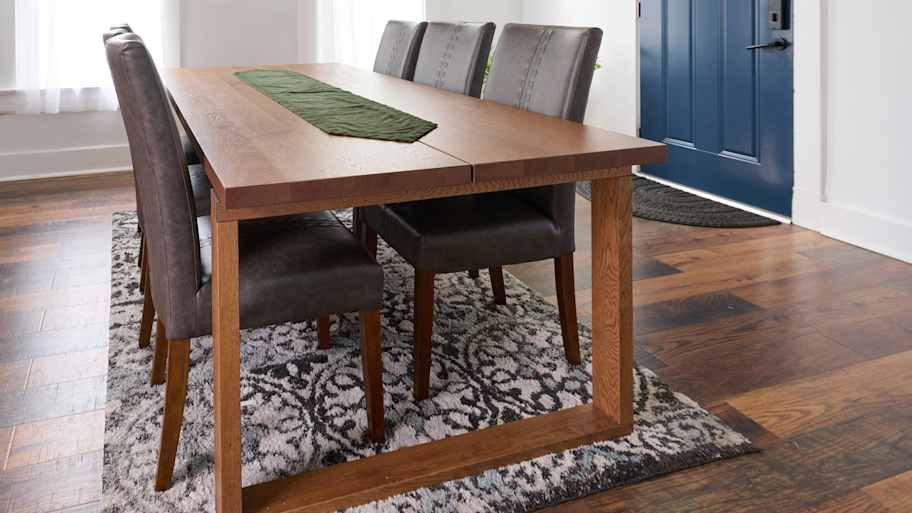

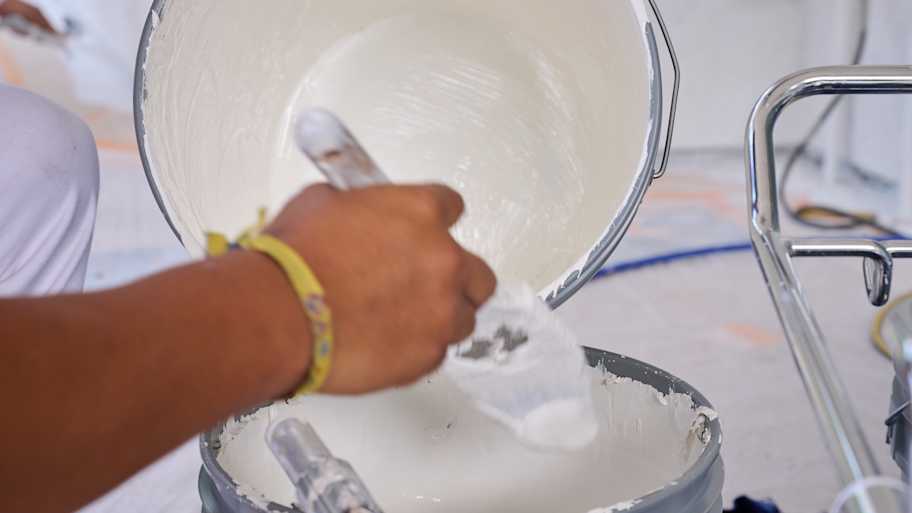
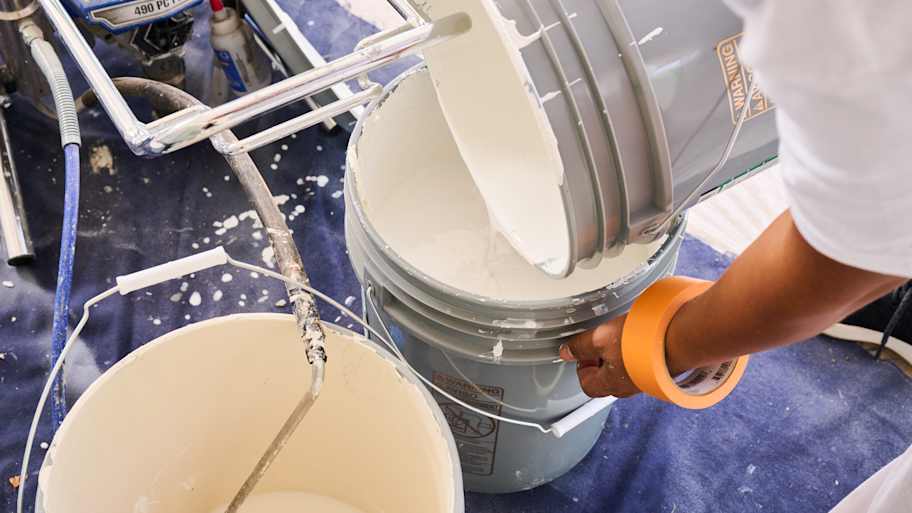
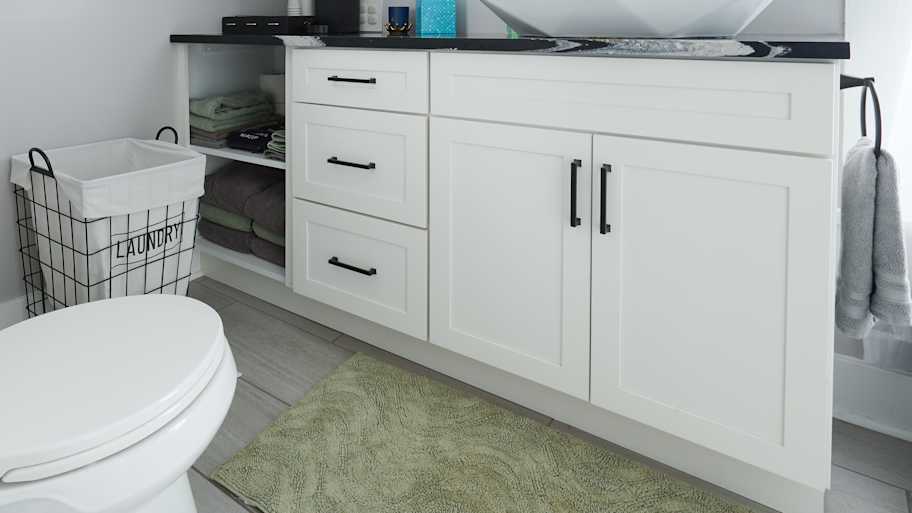
- Top 12 Kitchen Backsplash Ideas on a Budget
- 15 Bathroom Backsplash Ideas to Update Your Space
- 10 Common Painting Mistakes Homeowners Should Avoid
- 11 Painting Tips and Techniques for Your Home Painting Project
- 8 Smart Ways to Update Your Bathroom Tile Without Replacing It
- Quartz vs. Tile Backsplash: Which One Is Better? Costs and More
- Kitchen Backsplash Height Guide for Homeowners
- How to Dispose of Tile Properly
- Essential Supplies to Paint a Room: What You Really Need
- When Is the Best Time to Paint Indoors? A Helpful Guide




